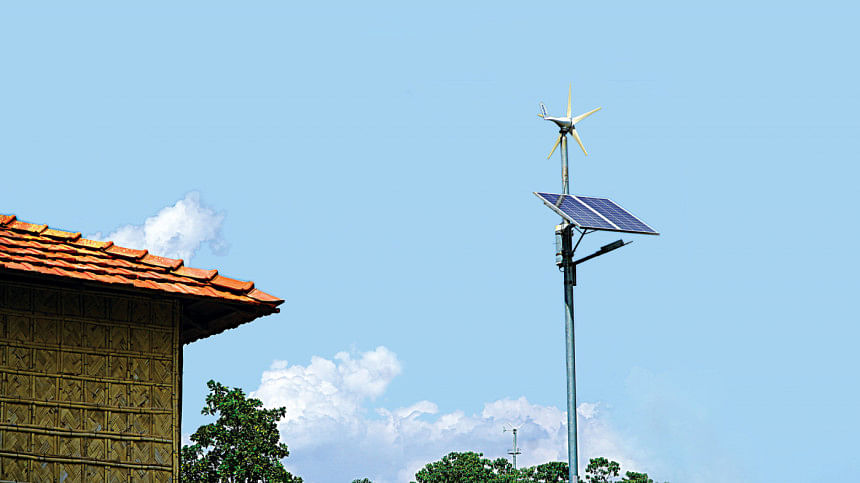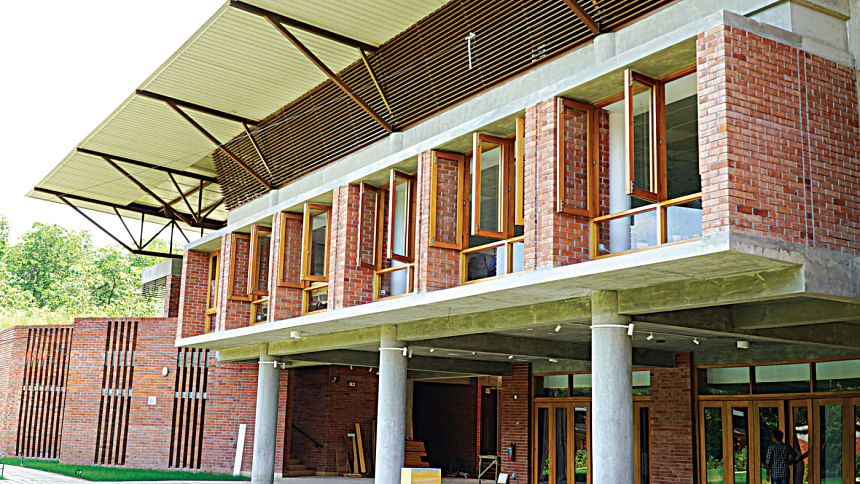CCDB Climate Technology Park: A hope for a better future

The issue of climate change is nothing new for us. And what about the implications? We see them on the news all the time. Bush fires, flash floods, heat spikes, and all that. Time after time, we continue to see the prolonged human-induced climate change.
Our extensive use of plastic, combined with our poor waste disposal systems ever since the industrial revolution back in the 1970's, has resulted in the world boiling and bubbling in its own heat. As humans, we tend to get desensitized after a while. All this news just becomes noise. Because it all sounds slightly hopeless. It may be difficult to believe that there is hope. Well, we're here to tell you there is. There is hope after all.
This year summer came early. Way too early! Summer in March! What about winter? Will it get shorter and shorter? How will the earth survive with a rapidly depleting ozone layer? Will Chittagong survive the rising sea level? If I turn off the air conditioner, will it help? And some more maddening questions keep me up at night. I think of children who are going to have to live on this earth because not everyone will be rich enough to get a spaceship ticket out to some other planet that might just have a little oxygen.
Recently, on a field trip to the CCDB Climate Technology Park, located some 60 kilometers to the north of Dhaka's metropolitan area, students of the University of Liberal Arts Bangladesh (ULAB) discovered multiple kinds of technology that can help address the reality of climate change.
It was a rather cloudy day at the beginning of our journey but soon the sun was up. Upon our entrance, the first thing I noticed were the green buildings. The buildings were constructed from something called 'soil material'. I believe the greens on top and the soil material made the buildings especially resistant to heat. Apart from that, none of the buildings I saw were white in color. The interiors were lit with energy bulbs.

They had this brick aesthetic on the exterior which added to their visual appeal. Almost all of the buildings had solar panels. In fact, the conference building had the widest array of solar panels I have ever seen in a building.
The Climate Center is divided into 5 regions, each region depicting the various regions prevalent in Bangladesh: including the coastal, dry, charland, hilly and haor zones.
Among these, I like the 'natural fridge' the best. Constructed of bricks and soil, it resembles a vat where farmers can store their fruits and vegetables. It's been a problem for farmers to protect the items from the humidity. It's expensive and the costs to tackle this results in a high carbon footprint. The water that drips slowly into the vat from a water tank keeps the inside cool making fruits and vegetables last longer.
Several climate change adaptation and mitigation technologies present throughout the facility was truly impressive. For instance, the electric vehicle charging station, rain water harvesting system, soil management technology, pond sand filtration process, bottle drip irrigation, mini pond technology for drought prone areas, biodegradable mulching paper (organic mulching), zero energy cool chamber, floating agriculture, water desalination panel and solar irrigation pump were quite interesting.
Up until now, we have only had a vague understanding of climate change. When we saw something as simple as a sustainable ceiling fan and all the way to organic farming, the concept of climate change and sustainable living became very real.
Seeing the various kinds of technology made me want to make actual changes in my life. Field trips are always an adventure for an undergraduate student. I believe that a trip to this incredible place will inspire positive lifestyle changes for just about anyone.

 For all latest news, follow The Daily Star's Google News channel.
For all latest news, follow The Daily Star's Google News channel. 



Comments